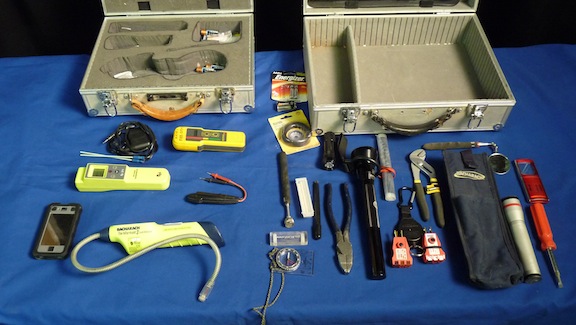Home inspections are the best way for a buyer of a property to know if it is in good shape. The inspection will document both major and small concerns to give you a full picture of the home you are about to purchase. Buying a house is likely to be the biggest investment you make in your lifetime.
A thorough home inspection is a must for every house buyer. This article will inform you of the role of the home inspector, and the tools he or she needs to perform a thorough inspection. When it comes to your home inspection, you’ll be prepared with everything from thermal imaging cameras and moisture meters.
What Is A Home Inspection?
Home inspections are a service that checks the condition of real estate properties before they close. A home inspector in Venice who is qualified will examine the condition of a property, including its heating, cooling, plumbing, electrical, water, and sewage systems, as well as fire and safety concerns. A home inspector will look for evidence of any damage to the property, such as water damage, insect damage, or fire damage.
How To Conduct A Home Inspection
The inspector will start by inspecting the foundation and structure of the house. The inspector will look for problems with the walls and floor framing as well as window alignment. The electrical system will be checked to ensure it is in compliance with the code, and the heating and cooling systems will also be tested. They will also test the sprinklers, fire alarms and carbon monoxide detectors.
You and your agent will receive a detailed report that includes recommendations. The inspection takes anywhere between two to four hours, depending on the size and complexity of the property. The inspector’s report may lead you to decide whether or not to continue with the sale as planned, ask for repairs or a reduced price, or cancel the deal.
The Tools Of The Trade: What Home Inspectors Use For An Inspection
Home inspectors may only use two items of equipment to conduct their inspection: a light and an electrical tester which can test ground-fault interrupter (GFCI). These tools are sufficient for a basic examination, but they do not allow the inspector to perform a thorough evaluation which could reveal serious issues if left unnoticed before purchasing the property.
Here are some categories of tools that a home inspector will need:
Safety
When entering places where air pollutants are present, inspectors should wear a respirator. These pollutants, when inhaled, can have adverse effects on health. Dust masks do not work. Filters should remove biological particles, including viruses, bacteria, and fungi, as well those produced by materials lodged in the respiratory tract, like asbestos and other carcinogens.
The presence of large particles in the air does not cause cancer. However, they can induce respiratory disease.
Gloves and safety glasses are also frequently used when working with electrical components.
Basic Inspecting Tools
The following tools are also essential for an inspection:
- Ladders: both step ladders, extension ladders, and telescoping ladders
- Screwdrivers
- Inspection Mirrors (allows limited visibility in wall cavities and other difficult to reach spaces).
Most inspectors have laptops and cameras with them to record the inspection and prove any items which need attention.
Advanced Home Inspection Tool
Inspectors also use other equipment to provide a more thorough inspection. Most of these tools have Bluetooth capability, which allows them connect directly to the inspector’s laptop to record information.
- The MMD7NP pinless LCD moisture meter is a great tool to prevent mold. The accumulation of water and moisture in the home can create dangerous and unhealthy conditions. Checking suspicious water stains on the property can help you determine whether an area has been wet for a while (a breeding ground for mold), or if it is dry.
- Infrared temperature meters are another example. The IRT217 Infrared Thermometer is a great tool for detecting hot or cold spots around your home. It has a ratio of 10:1 between distance and spot. The 217 features a targeting ring which takes the average temperature in an area. It is perfect for detecting drafts, but also to ensure HVAC systems, heating and cooling elements, or vents, are working correctly.
- Video inspection cameras. The Handheld Video Inspection Snake Camera comes with a 3.5-inch screen and a flexible, 3.3-foot snake with a diameter of 12mm. screen featuring 4 adjustable-brightness camera lighting LEDs. The DSC312 can be used to capture images in difficult-to see and/or difficult-to reach areas. The DSC312 is waterproof, oil-resistant and rustproof. It can be used with just one hand.
The tools help inspectors spot flaws that they would not have been able to see without them. Home Inspection Standards of Practice do not require this, but inspectors sometimes feel that using these tools will allow them to perform a thorough inspection and give them an advantage in the competitive market.

